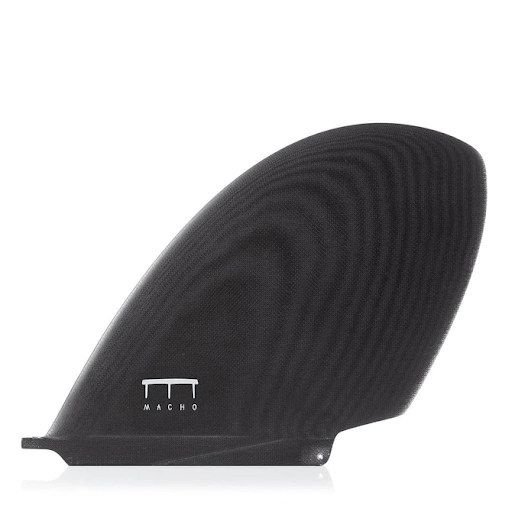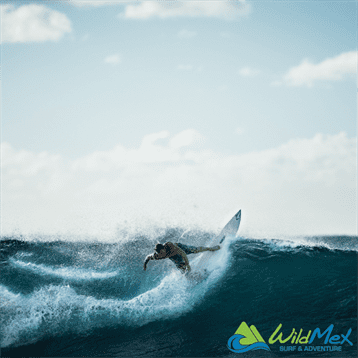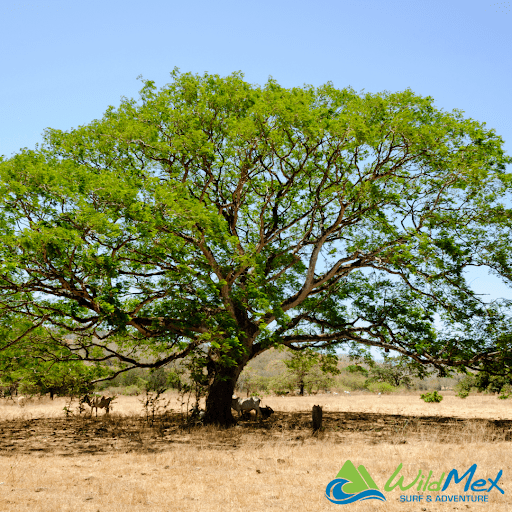How to Choose Your Longboard Fin – Guide for Surfing in Punta Mita and Sayulita

Incredible and outstanding maneuvers while surfing in Sayulita and Punta Mita are possible only with the right fins. When you fail to choose the right fins, high-performance surfing can become problematic.
In spite of the thruster vs quad setups for shortboards which you can read about in our alternative blog here, the diverse range of longboard fins now on offer have made surfing for beginners in Sayulita and intermediates alike, waaay more adventurous and enjoyable.
If you are planning on surfing in Sayulita or surfing in La Lancha here in Punta Mita, it’s vital to choose and learn to set up the most appropriate fin for your longboard to perform at your highest potential, no matter your current skill set.
This blog was carefully crafted by our WildMex team of dedicated surfers and wave lovers to help you on this journey and to ensure your surf trip is a memorable one, catching the finest waves, ripping the gnarliest maneuvers, and having the most fun possible out in the swell!
So, let’s make a start? Let’s learn how to set up your longboard fin for that splendid surfing experience here in Mexico…
Longboard Fin Setup for Surfing in Sayulita & Punta Mita
Nowadays, you will find a great variety of longboard surfboards on the market. Whenever you buy a longboard surfboard, make sure to perform the right fin configuration based on the board’s shape and outline. The two famous configurations are as follows:
- 2+1 fin setup
- Single fin setup
2+1 FIN SETUP

As its name depicts, a 2+1 fin is where the center fin is bounded with 2 other smaller fins or sidebites. The purpose of such a fin when surfing in Punta Mita or Sayulita is to get more control so that you can surf higher-performing waves.
To get the desired performance while using a 2+1 fin, you must choose a smaller centre fin compared to what you’d use with the single fin setup. Once you have this, you can perform the fin setup by moving the sideway fins to and fro in relevance with the center fin.
For more responsive and faster surfing, set the center fin closer to the sidebites. For greater control over your board, extend the distance between them.
Single Fin Setup

A great number of surfers and especially beginners-intermediate use the single fin setup for surfing Punta Mita, Sayulita and La Lancha. The prime reason behind this is that the single fins are not as sharp as 2+1 fins and are best for less drive. These single fin setups are not ideal for high-performing waves but perform flawlessly in small/medium, fat, and weak waves.
Single fins assure a loose flow under the feet while maintaining a high speed. As single fins are relatively larger with a 9” or 9.5” pivot, you can easily position your fin anywhere.
Positioning it forward would give you a looser feel while positioning it back would result in greater control and hold. Play around and see what works best for you!
Types Of Longboard Fins For Surfing Punta Mita & Sayulita
Whether you’re at home choosing a new fin for your latest surf trip to Mexico, on your way to our surf camp in Punta Mita, or you’re already here and simply passing by our surfboard rental in Punta Mita or Sayulita, it would be hard not to notice our selection of 300+ boards with a variety of fin setups, or the variety on offer in the marketplace right now! We get it, sometimes this can be a bit daunting – but don’t fret!! We are here to uncomplicate the whole process to ensure you end up choosing the most ideal fin for what you want to get out of your surfing experience!
Choosing the appropriate type of longboard fin is crucial to gaining good control, making powerful movements, and enjoying your turns without being too affected by the flow.
So, here is a brief description of each type of longboard fin and the ones we recommend to help you select the right one for your surfing needs!
Discover here…
1) The Flex Fin

With a narrow tip and a thin nose, the flex fins are great for their turning ability and performance on mellow waves.
Surfing for Beginners in Punta Mita is now more fun with Flex Fins due to two solid reasons – The first one is that these flex fins assure efficient movements with increased turnability as their flex let the maximum water energy pass through the fin easily.
Secondly, the flex fins are ideal for enjoying a little pizzaz and greater freedom for cuts and carves!
2) The All Round Fin

For those who love surfing throughout the year and in varied conditions, an all-round fin is a must-have! This all-round fin by True Ames has been designed on versatility to perform well within more or less all longboard wave surfing conditions. You’ll find many of our range of surfboards at our surfboard rentals in Punta Mita and Sayulita’ equipped-out with a classic like this one.
Choosing an all-round fin for your longboard would make you enjoy greater hold, stability, deep drives, and solid performance. With it, you won’t face any difficulty while trimming, cutbacks, or nose-riding.
The best feature about the all-round fin is that you can either use it as a single fin or with side bites as per your needs. It works absolutely super in any situation, for any surfer, for any type of longboard, and for all types of waves. Now, that’s a fin we’re mad for! – Yeeeeew!
3) The Pivot Fin

Pivot fins like this one from True Ames are the best choices for those who love practicing their cross-stepping abilities!
Additionally, pivot fins are also great for nose-riding as their long surface area will help you maintain stability and steadiness whilst striding to the nose or hanging 10.
The rounded nose of the pivot fin aids in smoother, easier, and controlled nose-riding while maintaining the sleek direction down the line of the wave. If progressing your longboard tricks and maneuvers is high on your list while learning to surf in Mexico, this is our top recommendation!
4) The D Fin

For more advanced surfers, surfing heavier and massive logs often under tropical storms, the D fin is the best pick. Its design effectively fits with any type of longboard and is the most powerful fin to deal with stormy waves.
Due to the larger surface area of the D fin, it becomes difficult for the heavier water waves to change the direction of the board. Hence, it doesn’t only promise greater hold but also greater stability over choppy waves.
Moreover, the D fins are popular for outstanding trimming abilities with greater ease and steady movements.
However, a D fin is not more preferable for nose riding because it doesn’t fulfill all the requirements that are mandatory for a nose-riding fin, so, keep this well in mind when selecting what you want out of your fins!
Learning To Place Your Longboard Fin

So, by now you know that the way you place your longboard fin majorly affects your stability and control over the waves.
If you place your longboard fin near the tail, you will get a good hold of your board during turns and cutbacks. In contrast, placing it near the nose would give you more stability during nose-riding.
You must be thinking about which option suits your surfing style best, which might change day to day, meaning you too can play around and change your fin setup on the daily, in regards to this!
The above-discussed types of fins would help you in deciding the best type for you based on your surfing purpose. For example, choosing a flex fin would require placing it near the tail for excellent turnability. Similarly, choosing a pivot fin would require you to place it near the nose for excellent nose-riding.
Whatever longboard fin you choose, practicing more and more and experimenting with configurations will help you enjoy surfing in Punta Mita and Sayulita to your absolute fullest!
Book a surf camp in Punta Mita to enjoy experimenting with our range of 300+ surfboards and their diverse range of fin configurations.

Do you want to discover more surfing theory to improve your surfing abilities? Our epic surf camp in Punta Mita and Sayulita will help you do just that! Discover our 2022 prices and packages here or alternatively, visit our site to browse through our amazing collection of 300+ surfboards and their variety of fin configurations to book an hourly, daily, or weekly rental to discover solo!
Have a question that hasn’t been answered here? Feel free to drop us a message for anything unanswered including locations, availability, pricing, and anything you want to know before you book your next epic surf trip here in Mexico!
Peace and Love,
WildMex











































